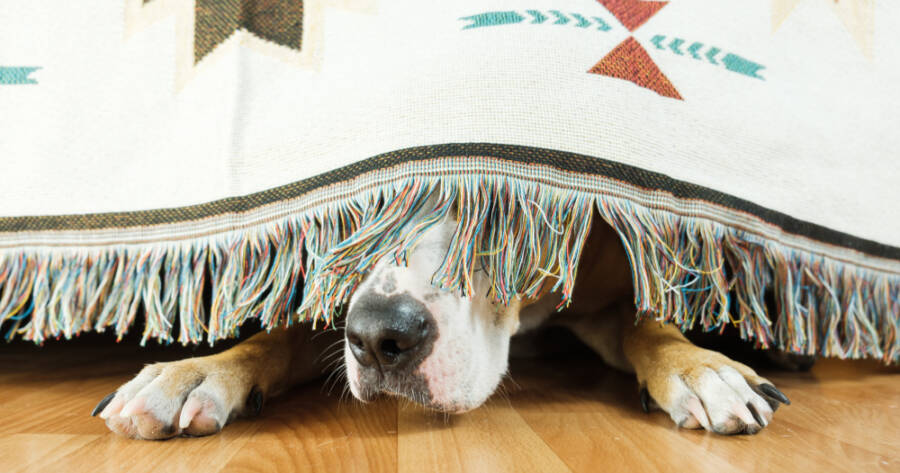Leaving your pet at home while you go to work or run errands can be stressful for both of you. Many pets experience separation anxiety, which can lead to destructive behavior, excessive barking, or even depression. The good news is that there are ways to help your pet feel safe and comfortable while you’re gone. By taking small but important steps, you can reduce stress and create a calm environment for your furry friend.
Understanding Separation Anxiety in Pets
Separation anxiety occurs when a pet becomes extremely distressed when left alone. This condition is most common in dogs but can also affect cats and other animals. Pets with separation anxiety may pace, whine, chew on furniture, or have accidents indoors, even if they are house-trained. Some may scratch at doors or windows in an attempt to escape.
There are many reasons why pets develop separation anxiety. Some may have had a history of abandonment, while others may be overly dependent on their owners. Changes in routine, such as a new job that requires longer hours away from home, can also trigger anxiety. Understanding the root cause of your pet’s stress is the first step in finding a solution.
Creating a Safe and Comfortable Space
One of the best ways to ease your pet’s anxiety is by setting up a space where they feel secure. Choose a quiet area in your home where they can relax. If your pet is used to a crate, make sure it is a cozy place with soft bedding and a favorite toy. For pets who prefer open spaces, a designated room with their bed, food, and water can be a great alternative.
Leaving familiar scents in your pet’s space can also provide comfort. Some pet owners leave an unwashed shirt with their scent so their pet feels close to them even when they’re not home. Playing calming music or white noise can further help reduce stress. Studies have shown that soft classical music or nature sounds can soothe anxious pets.
Establishing a Consistent Routine
Pets thrive on routine, and having a predictable schedule can help ease their anxiety. Try to keep feeding times, walks, and play sessions at the same time each day. Before leaving, take your dog for a brisk walk or engage your cat in a short play session. This helps burn off excess energy and allows them to rest while you’re away.
Avoid making departures dramatic. If you shower your pet with attention before leaving, they may become more anxious. Instead, practice short, low-key goodbyes. You can also give them a special treat or toy right before you leave, so they associate your departure with something positive.
Gradually increasing the time your pet spends alone can also help. If your pet becomes anxious after just a few minutes, start by leaving for short periods and slowly extend the time. This training reassures them that you will always return.
Using Toys and Enrichment to Keep Pets Engaged
Boredom can make separation anxiety worse, so providing mental stimulation is key. Puzzle toys filled with treats or peanut butter can keep your pet occupied for a long time. Interactive toys that require problem-solving can also help distract them from your absence.
For dogs, frozen treats or chew toys can offer comfort and entertainment. Some cats enjoy puzzle feeders that make mealtime more engaging. If your pet enjoys watching outside, setting up a perch near a window can give them something to observe while you’re gone.
Many pet owners also use pet cameras with two-way audio, allowing them to check in and talk to their pet remotely. While not a replacement for physical companionship, this can be a helpful tool for reducing anxiety.
Seeking Help When Needed
If your pet’s anxiety is severe, seeking help from a veterinarian or pet behaviorist may be necessary. Some pets may benefit from calming supplements or pheromone diffusers, which release scents that mimic the natural pheromones of a mother animal. In extreme cases, medication may be prescribed to help manage anxiety.
Training classes or working with a professional dog trainer can also make a difference. Experts can help create a behavior plan tailored to your pet’s specific needs. For some pets, doggy daycare or hiring a pet sitter may be a good solution if they struggle with being alone.
Helping Your Pet Feel Safe and Happy
Separation anxiety can be challenging, but with patience and the right approach, you can help your pet feel more secure. Creating a calm environment, sticking to a routine, and providing engaging activities can reduce stress and make time apart easier for both of you.
Every pet is different, so it may take time to find the best strategy. By showing love and consistency, you can ensure your furry friend stays happy and comfortable, even when you’re away.

